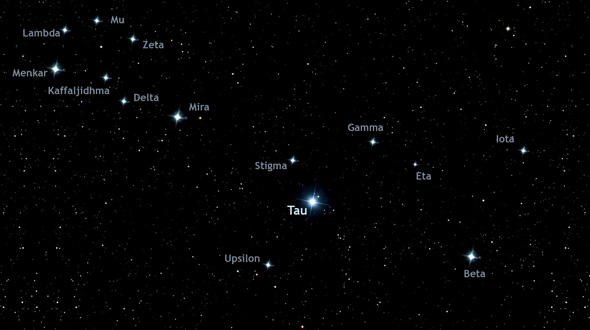Tau Ceti, one of the closest stars most like our Sun, may have five planets.
Tau Ceti is just 11.9 light years away and visible to our eyes in the evening sky. It is the closest single star with the same spectral classification as our Sun. Its five planets are estimated to have masses between two and six times the mass of the Earthm making it the lowest-mass planetary system yet detected. One of the planets lies in the habitable zone of the star and has a mass around five times that of Earth, making it the smallest planet found to be orbiting in the habitable zone of a Sun-like star.
Why didn't we know this before, since it is so close? Science got better. Star distances are measured using the parallax method. Starting in 1838, optics were advanced enough astronomers coulf position the location of a nearby star very carefully in relation to more distant stars behind it. They then measured those positions six months later when the Earth was on the opposite side of its orbit and found a measurable parallax. In 1989, the European Space Agency (ESA) launched the Hipparcos satellite to accurately measure the positions and motions of 120,000 stars and then a million more with lower precision.
Astronomers combined more than 6,000 observations from three different instruments and better modeling of the data to detect signals half the size previously thought possible, which greatly improves the sensitivity of searches for small planets and suggests that Tau Ceti is not a lone star but has a planetary system.
Tau Ceti was chosen for this noise-modeling study because the team thought it had no signals and would be a good benchmark system to test their methods for planet detection. This is particularly true because it is so bright and similar to our own Sun. It's also one of Earth's nearest cosmic neighbors, so scientists could be able to learn about the atmospheres of these planets in the not-too-distant future.

Mikko Tuomi, from the University of Hertfordshire and the first author of the paper, said, “We pioneered new data modelling techniques by adding artificial signals to the data and testing our recovery of the signals with a variety of different approaches. This significantly improved our noise modelling techniques and increased our ability to find low mass planets."
More than 800 planets have been discovered orbiting other worlds, but planets in orbit the around the nearest Sun-like stars are particularly valuable for research.
Steve Vogt from University of California Santa Cruz said, "This discovery is in keeping with our emerging view that virtually every star has planets, and that the galaxy must have many such potentially habitable Earth-sized planets. They are everywhere, even right next door! We are now beginning to understand that Nature seems to overwhelmingly prefer systems that have a multiple planets with orbits of less than one hundred days. This is quite unlike our own solar system where there is nothing with an orbit inside that of Mercury. So our solar system is, in some sense, a bit of a freak and not the most typical kind of system that Nature cooks up."
Published in Astronomy&Astrophysics






Comments